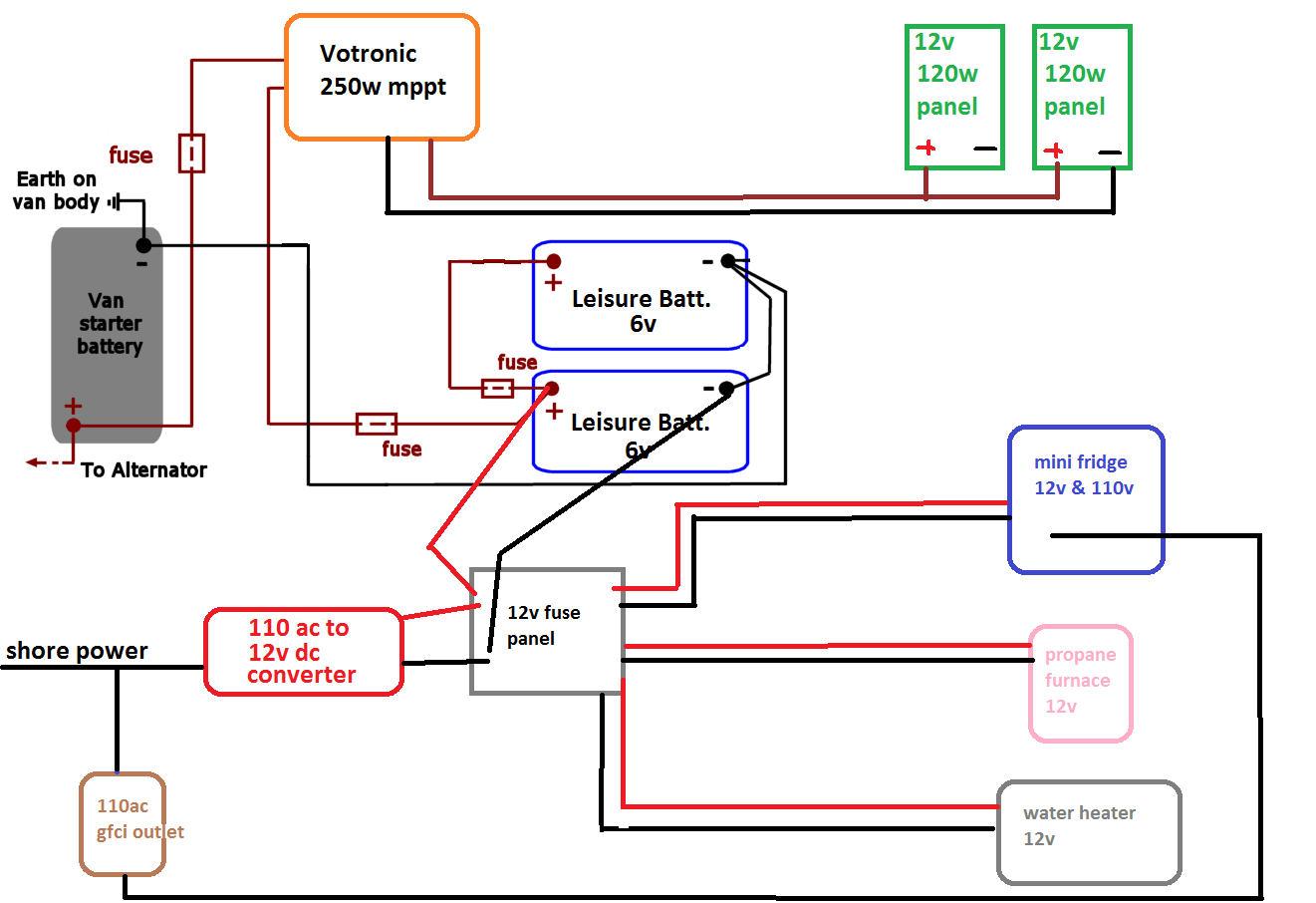There should be a fuse on the leisure battery output going to the DC panel. If the cable between the battery and power distribution panel were to chafe and short out, you would have one heck of an arc welder. Anything flammable in the area like carpet, would surely catch fire.
I don't know if you understood about the batteries being wired wrong. If those leisure batteries were both 12 Volt, then the way you have it would be correct.
That solenoid in your picture looks like it might allow charging of house batteries from the alternator. Without knowing where those wires go, it is impossible to say for sure. Also if you use a heavier gauge wire for this interconnect, you can use a larger inverter and run your vehicle when you want to use something heavy like a microwave. Make sure that the vehicle battery also has a fuse in the line going to solenoid. If any wire anywhere shorts out, you want a fuse to blow. Wire sizes are important, What were you going to use where and with what size fuses, Also include what size inverter you planned on.
There should also be a selector switch that disconnects the shore power outlet when the inverter is active. Also it would protect the inverter when plugged into shore power. This could be as simple as having a plug on the line going to the outlets and a receptacle at the inverter. When you want inverter, plug it in there, when you are on shore power unplug it from the inverter and plug it into your extension cord.












































































